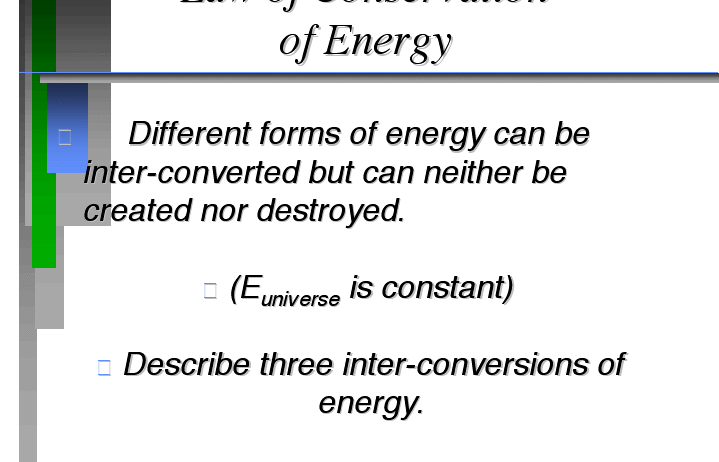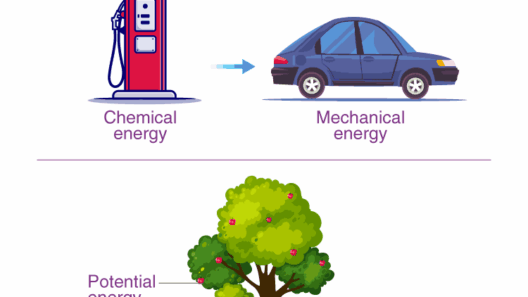The concept of energy conservation is pivotal in understanding the dynamics that govern the universe, particularly at the atomic and subatomic levels. But how do electrons fit into this principle? Intriguingly, this inquiry sparks a playful question: if electrons are mere particles of electricity, can they truly transfer energy without ever losing their own? This conundrum epitomizes the nuanced dance of energy conservation, especially when one examines electrons in various environments.
To delve into the conservation of energy as it pertains to electrons, one must first grapple with the foundational principle itself. The law of conservation of energy posits that energy can neither be created nor destroyed; it merely transforms from one form to another. In the realm of electrons, this transformation is complex, influenced by their interactions with other particles and fields.
Electrons, as charged subatomic particles, exist primarily within atoms. They inhabit distinct energy levels or shells around the nucleus. These energy levels represent quantized states, meaning that an electron can occupy a specific energy level but not any value in between. When an electron transitions between these levels, it does so by absorbing or emitting energy, often in the form of photons. This phenomenon is a splendid illustration of energy conservation: an electron does not simply vanish or conjure energy; instead, it transforms energy from one type to another.
When contemplating energy conservation in the context of electron behavior, one must also consider electric fields. Electrons respond to electric fields by exerting forces upon themselves and their surroundings. When placed in an electric field, an electron experiences a force that alters its kinetic energy, thereby demonstrating how electrons can convert potential energy into kinetic energy. The intricate relationship between an electric field and an electron encapsulates the essence of energy conservation—kinetic energy is not generated from nothing but derives from the potential energy initially present.
Another layer to explore in this multifaceted discussion is the relationship between electrons and thermal energy. Electrons contribute to the thermal phenomena in materials, marking their presence in conductivity and heat capacity. As temperature rises, electrons gain kinetic energy and cascade to higher energy states. Here, the conservation of energy principle persists; an increase in thermal energy results from the conversion of intermolecular potential energy, and the energy is not lost but redistributed among the atoms and electrons in a dynamic equilibrium.
Exploring electron interactions further leads to insights into their role in electrical circuits. An electric circuit essentially represents a controlled path for electrons to travel. When a voltage is applied, electrons gain energy, and the flow of electrons constitutes an electric current. The conversion of electrical energy into light, heat, or motion through various components underscores the conservation of energy principle. Most notably, resistors convert electrical energy into heat, illustrating that while the energy’s form may change, the total amount remains constant. Thus, energy conservation holds firm, even within the confines of man-made structures.
The interplay of electrons in chemical bonding also provides a significant vantage point for examining energy conservation. When atoms bond to form molecules, electrons are either shared or transferred between them. The formation or breaking of bonds entails a change in energy states. For instance, when bonds are formed, energy is released, while energy is absorbed when bonds are broken. This cyclic transformation illustrates the conservation of energy, emphasizing that while energy shifts between various forms, it never simply disappears. Rather, it’s akin to a game of energy tag—always present but changing hands continually.
One might pose a potential challenge with respect to energy conservation relating to electrons: what happens at the quantum level? Herein lies a realm of uncertainty and probabilistic behavior. Wave-particle duality allows electrons to exist in superposition states, adding layers of complexity to our understanding. However, even in these esoteric states, conservation laws remain intact. Quantum mechanics abides by the conservation of energy, positing that the total energy of an isolated system remains constant, even amidst the unpredictable antics of quantum particles.
Yet, the mystery does not dissipate entirely; transitions facilitated by electrons often give rise to new questions. What are the implications of electron energy behavior on a larger scale, especially regarding the environment? The significant role of electrons in energy transfer processes influences everything from plant photosynthesis to the efficient transfer of energy in renewable technologies. Hence, understanding these processes aids in optimizing energy consumption, reducing waste, and ultimately addressing the pressing challenges posed by climate change.
In summation, electrons are far more than mere carriers of electricity. They epitomize the principles of energy conservation, showcasing how energy can transform and transfer without disappearance. Through interactions with electric fields, thermal dynamics, electrical circuits, and chemical bonding, electrons illustrate the omnipresent truth that energy persists in myriad forms. This realization is not merely academic—it serves as a clarion call for future advancements in energy technology and environmental stewardship.
By understanding how electrons obey the conservation of energy rule, we can better appreciate the delicate balance of our ecological systems and harness this knowledge to pioneer sustainable solutions. The scientific explorations of today will be pivotal in confronting the environmental challenges of tomorrow. Innovations in energy efficiency and renewable sources may very well hinge on our deepening comprehension of electron behavior—a realm where physics and environmental responsibility converge harmoniously.







